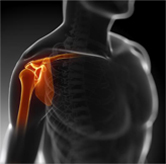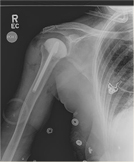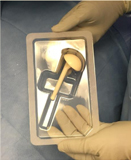Shoulder Infection
What is it?

Infection of the shoulder joint is rare, with an incidence of 0.5% after total shoulder replacement. The most common bacteria responsible for the infection in the joint are Staphylococcus aureus, Staphylococcus epidermidis, and Propionibacterium acnes. Infection can develop from the outside world from an open wound following a trauma or after an operation. Bacteria can also spread from inside the body while suffering from a cold or infection in another joint or body part.
Signs that you might have an infection in the shoulder jointinclude warmth, redness, pain, fever, and loss of mobility in the joint.Night pain is another possible symptom.The key to treating a shoulder joint infection is by catching it early.
Treatments
Early Detection
The earlier an infection is caught the better. If infection is suspected, the joint may be aspirated, or drained of any fluid with a needle and sent for a laboratory cultureto see if bacteria are present.
Operative Treatment
Aggressive irrigation and debridement arthroscopically with removal of all potentially infected or nonviable tissue


Antibiotic spacer-debridement of infected tissue and bone, spacer provides local antibiotic therapy,
Some people can have remarkable functionand little to no pain with an antibiotic spacer. However, most of the time when the infection is cleared, a revision shoulder replacementsurgery can be performed to restore function and treat pain.







